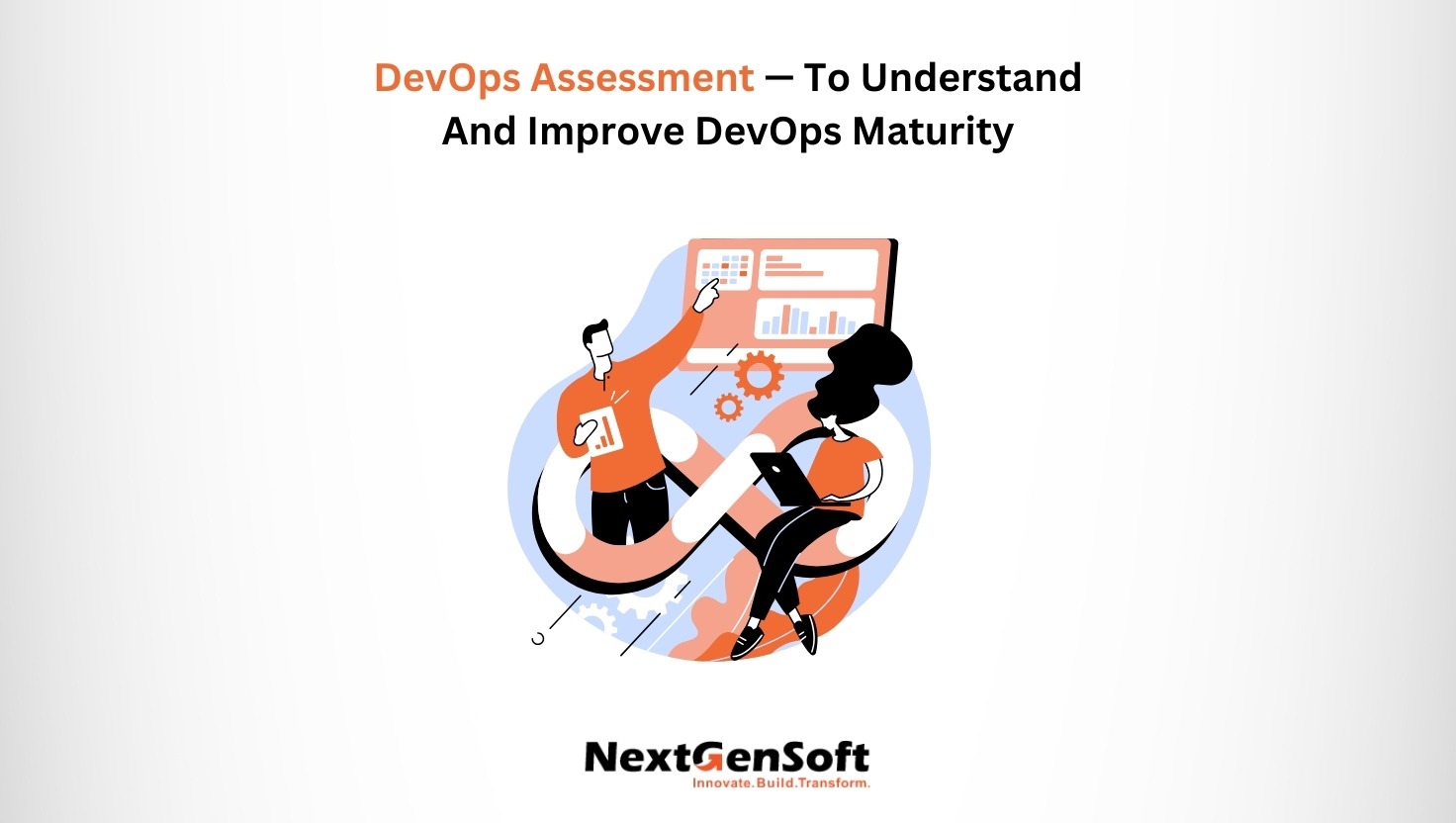
DevOps has risen to the forefront of this need, transforming the way we build and deploy applications with a collaborative approach that transcends traditional silos. However, simply doing DevOps is not enough: it is critical to measure and validate its impact. However, what you can do with a DevOps maturity assessment is a systematic way of evaluating your current DevOps implementation and what needs to be tweaked to discover the DevOps bottlenecks in the USA, optimize the DevOps processes in the USA, and plug the gaps in their workflows.
How Enterprises & Startups USA Can Perform DevOps Health Check For Their Businesses? This can not only streamline the processes and improve the collaboration, automation, and delivery, but businesses are also needed for enterprise and startup by conducting the DevOps health check. In this article, we will discuss why you need a DevOps Assessment, how to perform it, and the best practices for continuous optimization.
What Exactly is a DevOps Maturity Assessment?
A DevOps maturity assessment is a structured evaluation that assesses an organization against its DevOps capabilities and best practices across several areas, such as automation, collaboration, security, and monitoring. It guides the review of what isn’t there and where you need to build.
To help organizations detect such inefficiencies and frame a roadmap for a smooth DevOps transition, DevOps Gap Analysis Services USA can play a significant role. The evaluation broadly covers the following areas:
- Development and Deployment Process
- Infrastructure automation
- Monitoring and observability
- Security and compliance
This includes information regarding team collaboration and team culture.
Why Perform a DevOps Maturity Assessment?
You need to understand your DevOps maturity level so that you can achieve speedy deployments, higher reliability, and efficiency. Here are some of the key reasons to do a DevOps assessment:
- Identifying DevOps Bottlenecks: This enables organizations to make case-by-case maturity improvements to help them run more efficiently and at scale.
- Promote Collaboration: A maturity assessment opens the door to collaboration between development and operations teams in ways that previously was impossible.
- Enable Strong Security & Compliance: Security is integral at every stage of the DevOps pipeline with the assessment.
- Improved Uptime: A DevOps framework with in-depth assessments acts to reduce outages and leaves your systems with less failure probability.
Key Stages of DevOps Maturity Assessment
To assess aspects of the DevOps pipeline, this process typically includes several phases.
-
Assessment Planning
Understand the purpose of the assessment and guide provide write-level resources to the audience: developers, operations, security & management teams. By defining metrics to measure DevOps success, the assessment is aligned with the organization’s objectives as well as the industry standards.
-
Data Collection & Analysis
This entails conducting surveys and interviews with teams to gather information from them. By taking a look at the historical performance data (such as deployment frequency, failure rates, and recovery times), this analysis can provide insight into where the organization currently sits on the DevOps maturity spectrum. You can likewise do a for new businesses USA or (enterprises) DevOps wellbeing check to comprehend the DevOps culture and their readiness to improve.
-
DevOps Gap Analysis Services USA
At this moment, the big gaps between current DevOps practices and industry best practices are uncovered. They know future automation, security improvement and process optimization. These identified gaps are then transformed into a formal roadmap for closing them to achieve maximum business value from the DevOps investments made.
-
Monitoring for the Implementation of Improvement
After identifying the gaps, organizations then focus their energy on automating manual processes that are ineffectual. Feature: CI/CD Process Improvement CI/CD pipelines improvements facilitate quicker, more secure configuration and deployments. In addition, the implementation of infrastructure as code (IaC) offers automated provisioning and scaling, reducing the chances of configuration errors.
As soon as a new model is deployed into a production environment, it starts getting fed live data and is subject to a constant feedback loop from what it outputs.
-
Continuous Monitoring & Feedback
Lastly, use monitoring tools to analyze the performance of the system and do periodic reviews to align the project with the DevOps goals. And strengthening a culture of continuous improvement and agility through feedback loops that are established to enhance processes over time.
Let Us Understand What Are DevOps Maturity Levels?
Organizations typically fall under three maturity levels in DevOps:
Novice Stage
The novice stage describes a situation where there are few, if any, DevOps practices in place or, at the very least, DevOps practices are still in their infancy. It has led to the creation of silos between development and operations teams. Deployment and testing is largely manual, which results in a slow release cycle and lots of bugs. In most, horrible version control and very little (or no) automation, which results in: hard to change, or maintain consistency, or recover quickly from failures. For example, businesses at this stage have low uptime and no real-time monitoring, while the development environment is always unstable.
Intermediate Stage
At the intermediate level, organizations begin to adopt DevOps principles and get some basics of automation. We have quality CI/CD (Continuous Integration Continuous Deployment) which reduces manual work in software release. The collaboration between the development and operations teams has improved, leading to better interaction and solving real problems faster. It introduces basic concepts of monitoring and incident response mechanisms that equip teams to notice and address issues faster. But the little automation that exists is often piecemealed, and security hasn’t yet been fully integrated into the DevOps pipeline.
Advanced Stage
The advanced level organizations have implemented the DevOps practices, with fully automated CI/CD pipelines that are live. Also, Software deployments are more stable and frequent, thus minimizing the chances of failure. Security & compliance are integrated into the development lifecycle so the application can comply with regulations without stifling innovation. Containerization and orchestration, especially using popular tools like Kubernetes, help increase scalability and microservices management and enhance deployment efficiency for teams. Infrastructure automation tends to lend itself to this model, allowing for a seamless approach to provisioning, configuring, and managing resources.
Elite Stage
At the highest level of DevOps maturity, organizations deploy code dozens of times a day and experience almost no failures. Your a vile piece of cloud automated evil, your full blown into Infrastructure as code bullshit, your entire cloud provision and configuration can be completely automated. Such advanced AI-based DevOps solutions are used for performance tuning, failure prediction, and predictive scaling. Ongoing security assessments and automated compliance testing ensure a robust security posture. These organizations focus on a culture of improvements, innovation, and optimal software delivery.
Detecting DevOps Bottlenecks & Process Optimization
Even the most mature DevOps organizations struggle. Identifying and resolving obstacles is crucial to optimizing workflow, reducing lag time, and increasing effectiveness. In this article, we explore some common DevOps bottlenecks and the best practices to optimize processes.
-
Slow Deployment Pipelines
Problem: The time taken between deployments can delay the release of new features, security patches, and updates, slowing business objectives.
Solution: Use automated testing and continuous integration (CI) to quicken deployments. Tools like Jenkins, GitLab CI/CD, and CircleCI automate the testing process and help minimize manual intervention to get consistent deployments. Feature flags also allow teams to deploy updates in a controlled manner and with no user impact.
-
Frequent System Failures
Problem: Business credibility is harmed by frequent crashes or performance-related issues, which also impact the experience of customers!
Solution: Your data feed is up to date. If you use reputed tools, you can use chaos engineering techniques to shatter resilience so that weaknesses are uncovered long before they lead to a significant disruption.
-
Security Vulnerabilities
Problem: Applications are at greater risk of data breaches or noncompliance due to the lack of security controls throughout the development pipeline.
Solution: Include security tools in the CI/CD pipeline for scanning for vulnerabilities in real time. Tools like Snyk, SonarQube, and Aqua Security enable users to discover and mitigate security vulnerabilities earlier in the development life cycle. The DevSecOps model empowers both dev and ops teams with a shared responsibility for security, rather than one team solely responsible for it.
-
Failure to Work Together Among Teams
Problem: Software development, operations, and security teams often work in silos, leading to bottlenecks in the software delivery process.
Solution: Adopt shared accountability, clear process documentation, and infrequent training to get the others on the same page, i.e., foster collaboration between dev and ops. Make it easy for cross-functional teams to communicate with each other by using collaboration platforms such as Slack, Microsoft Teams, or Jira. In such cases, conducting periodic DevOps workshops and retrospectives ensures that everyone is collaborating and aligned with the goals.
-
Not Monitoring & Managing Incidents
Problem: There isn’t any monitoring & incident management. Teams struggle to detect and resolve issues on the fly, resulting in prolonged downtimes and pathetic system levels.
Solution: Instrument runtime metrics with tools such as Prometheus, Grafana, or Splunk to gain insights. Early detection of anomalies, before they ruin user experience, establish alerts, automatic notifications, and proactive issue resolution mechanisms that detect the outliers before they become visible to users. Finally, some clear incident response plan empowers teams with the ability to respond fast and minimize business impacts.
DevOps and DevOps Maturity Assessment Sample Questions
To determine DevOps maturity, organizations should be in a position to answer a few questions, such as:
- How frequently do we deploy new code?
- What is our average deployment failure rate?
- How quickly can we recover from failures?
- Are security checks integrated into our development process?
- How automated is our infrastructure provisioning and configuration management?
Identification of Gap as DevOps Gap Analysis Services
A DevOps gap analysis helps organize organizations to constantly iterate and improve their DevOps workflows. Some strategies do work:
- Conducting periodic audits to ensure adherence to DevOps best practices.
- Utilizing AI-driven analytics to predict and resolve potential failures.
- Implementing DevSecOps to embed security into every stage of development.
- Encouraging a feedback-driven DevOps culture for continuous innovation.
Conclusion
To scale software delivery, operational efficiency, and security, organizations need to assess DevOps maturity. Whether your business is small or big, a DevOps health check for startups USA or a comprehensive DevOps gap analysis services USA helps you stay ahead of the competition and streamline processes.
NextGenSoft specializes in DevOps maturity assessment and devops maturity gap analysis services in usa to help companies smoothly perform their devops transformations. Contact us today to assess your current DevOps maturity and find new avenues for growth!
NextGenSoft will help you get the most out of your DevOps! Contact us today for a complete DevOps maturity assessment, and find out how we can help improve your DevOps processes for optimal performance?


